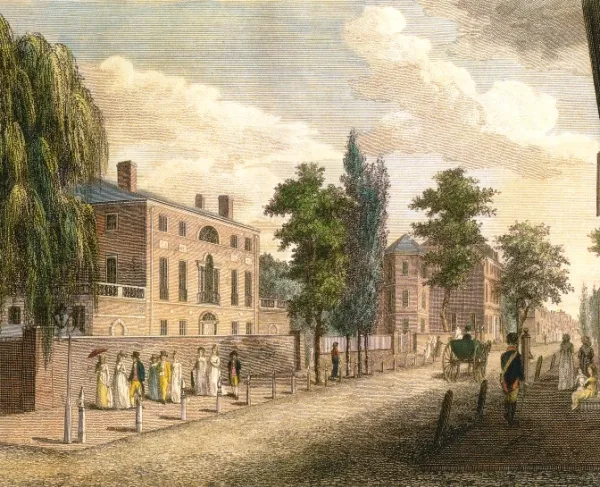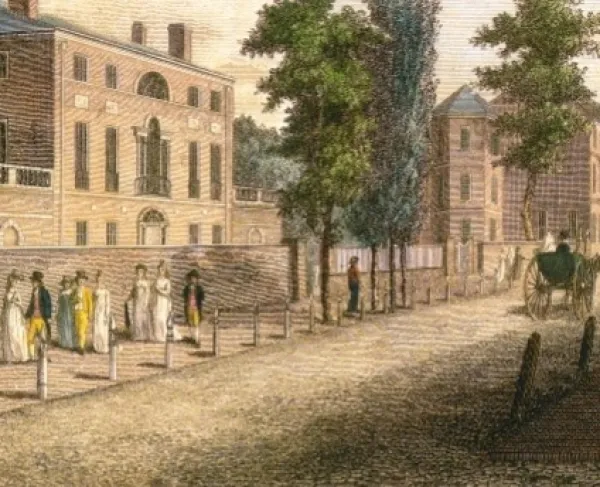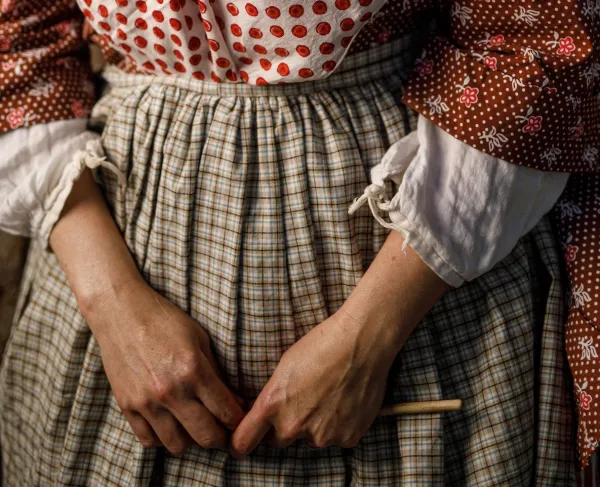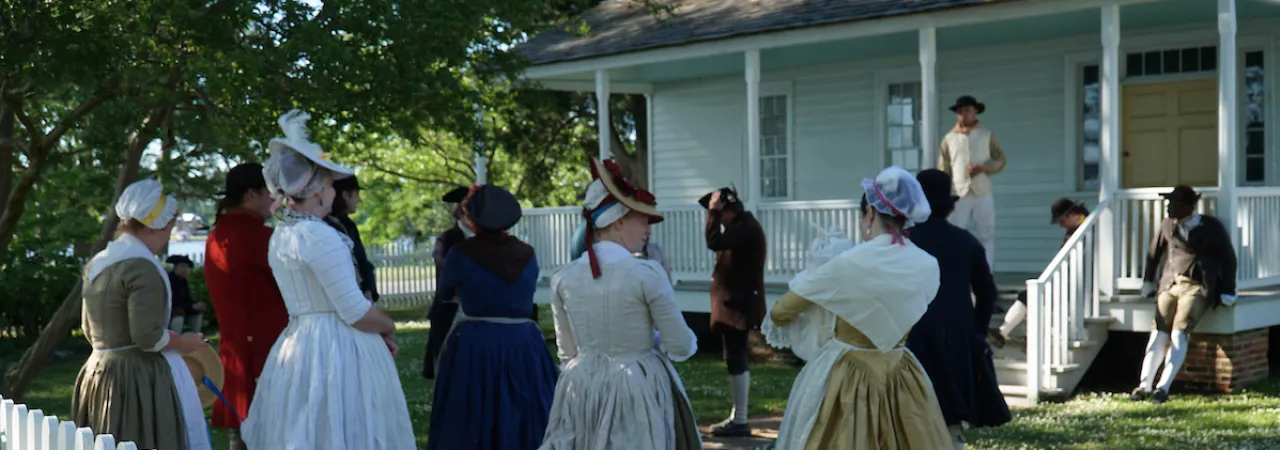
“Daughters of Liberty, young ladies of good reputation, assembled at the house of Doctor Ephraim Bowen, in this town…There they exhibited a fine example of industry, by spinning from sunrise until dark, and displayed a spirit for saving their sinking country rarely to be found among persons of more age and experience.”
The eve of the American Revolution gave some women an opportunity to enter the political sphere. While women still were not permitted to serve as elected officials in governing bodies such as colonial general assemblies or the growing number of extra-legal committees dedicated to organizing a patriot resistance to British policy, women could voice their political opinions and demonstrate their patriotic sentiments by signing petitions, participating in nonimportation movements, and using their voice.
Women formed the Daughters of Liberty in 1766 to formalize their political agency during the Stamp Act crisis. They often provided support to the Sons of Liberty founded by politically active men in and around Boston, Massachusetts that same year. Sam Adams, a prominent founding member of the Sons of Liberty, was vocal about the importance of women to the patriot cause, reportedly stating, “With ladies on our side, we can make every Tory tremble.” One of the women credited with founding the Daughters of Liberty is Sarah Bradlee Fulton. Sarah is sometimes referred to as “The Mother of Boston Tea Party,” because she helped to organize that protest against the Tea Act in Boston Harbor in 1773. By then, though, chapters of the Daughters of Liberty were active far outside Boston and had mobilized critical social and economic support for the patriotic cause. It is still unclear how formally the Daughters of Liberty were organized, or whether the term became more broadly applied to many politically-active women and their gatherings in New England and beyond.
On the eve of the Revolution British policies, taxes and trade acts impacted women greatly. The Stamp Act (1765) placed a tax on cards and dice, as well as mortgages and deeds, wills, newspapers, and pamphlets which women purchased. The Stamp Act also placed taxes on liquor licenses—women being many of the tavern owners in the colonies. The Daughters of Liberty popularized the idea of boycotting the stamps and taxed goods, effectively leading to the repeal of the Stamp Act altogether. The Townshend Acts (1767) further impacted women’s lives by placing taxes on a whole host of goods imported from Great Britain—glass, lead, paint, paper, and of course, tea. In response, the Daughters of Liberty organized wide-spread nonimportation movements, encouraging women and men to sign nonimportation agreements and circular letters. Some of these agreements and letters survive, bearing the names and marks of many women who signed them.
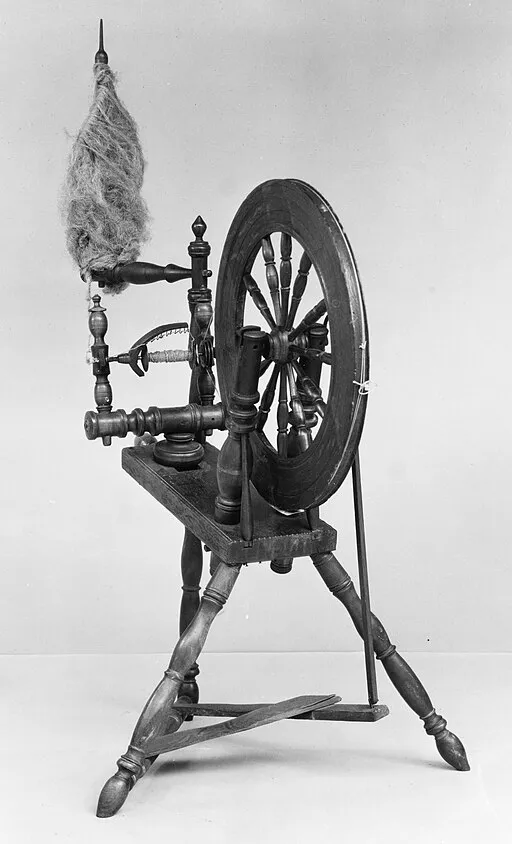
Importantly, the Daughters of Liberty gave women a political arena in which to support patriotic movements without necessarily stepping outside of their normal gender roles. Women could translate traditional activities like into decidedly political ones which were widely celebrated and nonthreatening to the status quo. Spinning bees is perhaps the most widely known and famous example of women’s political action during the Revolutionary era. On December 24, 1767 The Massachusetts Gazette Extraordinary reported “We hear that there was held two or three evenings ago, an assembly of Ladies of the first quality…who thro’ a resolution to encourage to the most of their Power the manufactures of this country, have made spinning their only employment.” In Rhode Island, the Daughters were “laudably employed in playing on a musical Instrument called a Spinning Wheel.”
Importantly, commentators noted that women who participated in these political spinning bees did so without deserting their traditional tasks and daily work. One Massachusetts lady “did the morning work of a large family, made her cheese, etc., and then rode more than two miles, and carried her own wheel, and sat down to spin at nine in the morning…and went home to milking.”
Daughters of Liberty were adamant against drinking British-imported tea, especially at gatherings where they came together to spin where they “cheerfully agreed to omit tea, to render their conduct consistent.” Women found substitutions in locally-sourced herbs and other libations found locally. The women whose spinning bee was reported in Massachusetts “drink nothing at their meetings but New England Rum, as Rum is the principal and almost only manufacture of this country.”
In addition to spinning and boycotting tea, by their dress, consumption, and purchasing power, women could translate their participation in the local and global economies into political action. Women who identified as Daughters of Liberty were noted in newspapers for their simple, homespun gowns, and lack of adornment with British imports such as ribbons, laces, and luxurious accessories. The Massachusetts Gazette Extraordinary noted that these women “have not wore ribbons for many years past…” In Williamsburg, Virginia women proudly wore homespun gowns at a ball in the colonial Capitol. In December 1769, the Virginia Gazette reported that patriotism “manifested in the dress of the ladies,” and expressed that “all assemblies of American Ladies (should) exhibit a like example of public virtue and private economy, so amiable united” in homespun dress. Some Daughters of Liberty expressed that they “would not even admit the addresses of any gentlemen” who did not also oppose British taxation without representation.
Though most active in New England on the eve of the Revolution in the late 1760s, the activities of the Daughters of Liberty set the stage for women’s political involvement and agency during the American Revolution, providing a solid foundation for more women to support the patriot cause in socially acceptable ways. As their support for nonimportation movements and homespun activities saw success the decade before, women’s contributions would again prove what one writer observed in 1769: “I presume there was never a Time when…the Spinning wheel could more influence the Affairs of men, than at present.”
Further Reading:
Carol Berkin, Revolutionary Mothers: Women in the Struggle for America’s Independence, Knopf, 2005.
Mary Beth Norton, Liberty’s Daughters: The Revolutionary Experience of American Women, 1750-1800, Cornell University Press, 1996.
Ray Raphael, A People’s History of the American Revolution: How Common People Shaped the Fight for Independence, New Press, 2011.
“Willie-Nillie, Niddy-Noddy,” in Laurel Thatcher Ulrich, The Age of Homespun, Knopf Doubleday Publishing Group, 2009.

